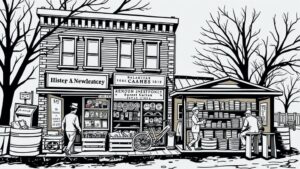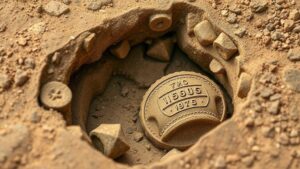Recovering Silver Coins in Forgotten Trading Village Sites
Recovering Silver Coins in Forgotten Trading Village Sites
The pursuit of silver coins in abandoned trading villages has intrigued treasure hunters, historians, and archaeologists alike for centuries. These sites often serve as time capsules, preserving a wealth of information about trade, economy, and culture of the past. This article explores the methodologies and significance of recovering silver coins from such sites, shedding light on both the historical context and modern techniques used in coin recovery.
The Historical Significance of Trading Villages
Trading villages were pivotal in the development of commerce and cultural exchange in historical societies. e hubs facilitated trade between various groups, leading to the circulation of not only goods but also ideas and technologies. A prime example is the medieval trading village of Novgorod in Russia, which was a significant center for trade between Europe and Asia, where silver coins like dirhams and pennies were commonly used.
Also, many trading villages resonate with stories of economic prosperity, decline, and abandonment. Over time, these villages have been lost to modern development or natural disasters. Recovering silver coins from these forgotten sites can provide invaluable insights into trade patterns, economic conditions, and societal changes over time.
Methods for Recovering Silver Coins
There are several methods employed by enthusiasts and professionals in the recovery of silver coins from trading village sites, each with its own set of benefits and challenges.
- Metal Detection: One of the most common methods for recovering silver coins is through the use of metal detectors. Devices like the Minelab CTX 3030 or Garrett AT Pro are specifically designed to locate metallic objects buried underground. These detectors can identify the specific type of metal, which is crucial in distinguishing between various types of coins.
- Archaeological Excavation: Professionals often undertake systematic excavations of trading village sites. This process involves digging in layers to uncover artifacts carefully. Archaeological digs often employ techniques such as stratigraphy, where the context of each find is recorded to understand the chronology of human activity in the area.
- Ground-Penetrating Radar (GPR): This advanced technology allows researchers to visualize underground structures without excavation. By sending radar pulses into the ground, archaeologists can ascertain the presence and depth of buried coins or other artifacts.
Notable Case Studies
The recovery of silver coins from forgotten trading villages is not merely a theoretical endeavor; there have been numerous successful case studies that illuminate the process and its implications. For example, in 2013, a team of archaeologists in the UK unearthed a hoard of silver coins dating back to the 13th century in a deserted village in East Anglia. This hoard provided critical evidence regarding trade routes and coin production techniques of the time.
Another striking example is the excavation of a trading village in the American Midwest, where coins from the early 19th century were discovered alongside Native American artifacts. This find has given new depth to the understanding of economic interactions between European settlers and Indigenous tribes, illustrating the complexities of cultural exchange in trading activities.
Challenges in the Recovery Process
Despite the potential rewards, recovering silver coins from forgotten trading villages presents several challenges. e include:
- Legal and Ethical Considerations: Many sites are protected by heritage laws. Unauthorized excavations can lead to legal repercussions. It is crucial that individuals or teams conducting recovery operations secure the necessary permits and respect the cultural significance of the sites.
- Environmental Factors: Soil composition, vegetation, and weather conditions can hinder the recovery process. Rain and flooding can obscure artifacts or shift them from their original context, complicating recovery efforts.
- Historical Interpretation: The recovery of silver coins is only the first step; interpreting their significance requires comprehensive historical knowledge and context. Misinterpretation can lead to flawed conclusions about past societies.
Real-World Applications of Silver Coin Recovery
Recovering silver coins from trading villages has practical applications beyond academic interest. These findings can enhance tourism by creating historical narratives that attract visitors. For example, the preservation of a trading village and its artifacts can lead to educational programs, museum exhibitions, and guided tours that celebrate local history and promote economic growth through heritage tourism.
Also, these recoveries can inform collectors and the numismatic community about the types of coins used in trade, their origin, and their minting techniques, all of which contribute to the broader understanding of monetary history.
Actionable Takeaways
For those interested in participating in silver coin recovery from forgotten trading villages, consider the following steps:
- Conduct thorough research on local laws regarding metal detection and excavation.
- Join local archaeological societies or forums to gain insights and network with experienced treasure hunters.
- Invest in quality equipment, such as metal detectors and excavation tools, to improve your chances of a successful recovery.
- Document your findings systematically to contribute to the larger narrative of the sites history.
To wrap up, recovering silver coins from forgotten trading village sites is a multifaceted endeavor that combines history, technology, and ethics. By employing careful methods and respecting the context of the past, enthusiasts can uncover a treasure trove of knowledge that illuminates humanitys trading practices and artistic achievements.


